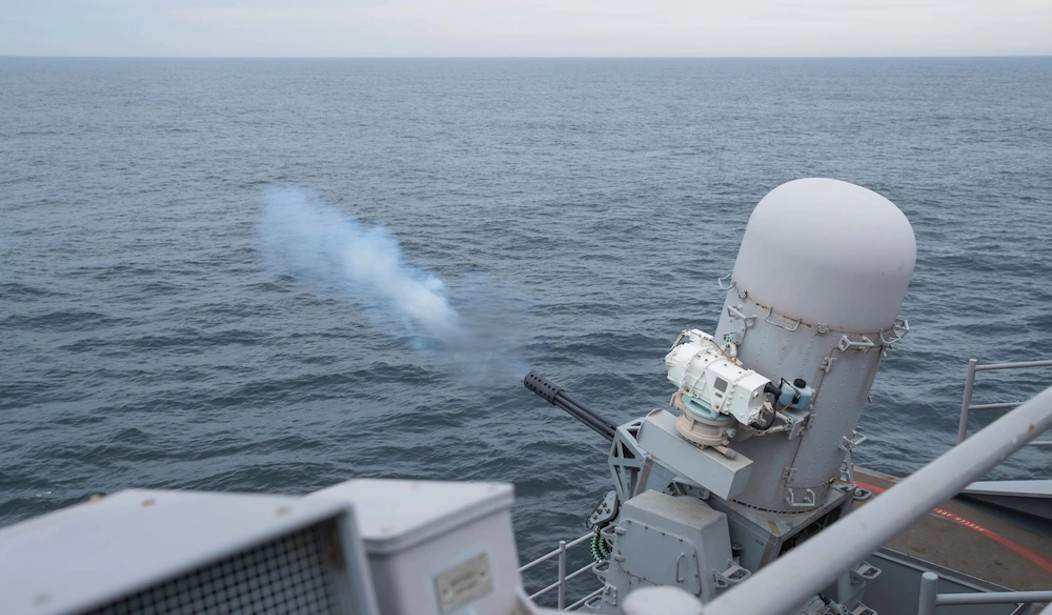US Navy Ship Has Close Call With Houthi Missile; How Much Longer Until the Luck Runs Out?
A US Navy destroyer narrowly avoided a disaster Tuesday when it was forced to use its close-in defense system to engage a Houthi anti-ship cruise missile seconds before impact.
The Arleigh Burke-class destroyer USS Gravely was fired upon while on patrol in the Red Sea. US CENTCOM describes what happened this way.
On Jan. 30, at approximately 11:30 p.m. (Sanaa time), Iranian-backed Houthi militants fired one anti-ship cruise missile from Houthi-controlled areas of Yemen toward the Red Sea. The missile was successfully shot down by USS Gravely (DDG 107). There were no injuries or damage reported.
The real story was a lot more exciting for the crew of the USS Gravely.
The sea-skimming Houthi anti-ship cruise missile came within a mile of the USS Gravely before being engaged by its Phalanx Close-In Weapon System.
The USS Gravely has been on station in the Red Sea since November 3 and has been in action several times (the infographic has been updated to include this latest incident).
There are two salient points to take away from this episode.
Something Went Wrong
Previous missile intercepts have been about eight miles from the destroyer. This is the first to occur less than a mile from a US Navy ship.
A US official said the fact that the Gravely was not able to intercept the missile sooner does not indicate that the Houthis’ attacks have gotten more sophisticated.
Tom Karako, the director of the Missile Defense Project at the Center for Strategic and International Studies, said it was “concerning” that the Houthi missile managed to get so close to a US warship.
“If it’s going at a pretty good clip, one mile translates to not very long in terms of time,” Karako said.
In my estimation, there are three plausible scenarios for this event. None of them are pretty.
1. The Aegis radar did not detect the missile until it was inside missile launch parameters. This would imply a failure of the system or an effective Houthi countermeasure...or a breakdown of command.
2. A missile engagement failed. By that, I mean it malfunctioned either on launch or in flight and didn't hit the incoming cruise missile.
3. The decision to engage by gun was deliberate, either as a training exercise or to conserve missile stocks. Yikes!
This calls to mind the tragedy at the Tower-22 base in Jordan.
US bases had been fired on 170 or so times when the Tower-22 tragedy struck. Every once in a while, we launched air strikes at terrorists responsible, but most of the time, the attacks went unpunished. Tower-22 could have been like any other failed attack except for a confluence of events that allowed a terrorist drone to fly through the air defense system and hit the base.
All the USS Gravely needed to have a very bad day was a malfunction on the CIWS and four seconds.
This brings me around to a theme I've been hitting in every one of these posts on missile attacks in the Red Sea. The Biden White House has forced the US Navy to play a game it is not allowed to win. The best it can hope for is that no sailors get killed. The measured, proportional retaliatory attacks by CENTCOM against the Houthis obviously aren't deterring or intimidating them. No matter how good the Navy is, it isn't perfect. Eventually, that perfect storm of circumstances is going to fall together, and a lot of young men and young women are going to be killed.





Post a Comment